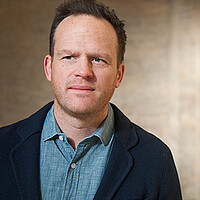DARPA offers rare glimpse at program to visualize cyberdefenses
Loading...
For the first time in public, the Pentagon's advanced research wing offered a glimpse into its latest version of a project designed to give the military visual tools to combat cyberattacks.
The $125 million Plan X project aims to immediately notify warfighters when adversaries penetrate their networks, and give them the tools to quickly select the best applications to defend against incursions from a shared database inspired by Apple's App Store.
"You can get really technical, but you are getting technical from a visual standpoint," said Frank Pound, the Plan X program director for the Defense Advanced Research Projects Agency.
Mr. Pound demonstrated the latest iteration of Plan X to an audience in Washington on Thursday at a Passcode event on cybersecurity innovation. The demonstration followed an exclusive first look into the still-developing project from Passcode deputy editor Sara Sorcher.
In addition to exploring Plan X, the event examined the future of cybersecurity innovation with William Hill, chief information security official at the MITRE Corp.; Dan Kaufman, director of the Information Innovation Office at DARPA; and Chuck Romine, director of the Information Technology Lab at the National Institute of Standards and Technology.
The full video of the event available here. These are some key takeaways:
Pound: Visualizing cyberthreats takes designing a program so anything abnormal 'catches the eye' (+VIDEO)
In building a visual platform, DARPA realizes an effective cyberdefense means that nontechnical people will need to be actively involved in that fight, said Mr. Pound, especially as the US military is working to beef up its cybersecurity personnel.
To achieve that, DARPA is using a system that's not so different from using a touchscreen tablet to drag and drop. "Not everyone is a computer scientist; not everyone is a developer," he said.
Pound: Plan X offers a bird's eye view of the entire network (+VIDEO)
That way, said Pound, the platform allows users to "get really technical but you are getting technical from a visual standpoint." Therefore, he said, it allows the specialist using the system to see where the intrusion is taking place.
Pound: Seeing the full network improves "situational awareness" (+VIDEO)
"What we are trying to do is provide situational awareness about your networks," he said. "Let's admit it, we are going to encounter the adversary in the future on our networks."
Kaufman: 'It's the closest thing you'll see to cyberwarfare' (+VIDEO)
The director of DARPA's Information Innovation Office is not talking about Plan X. Dan Kaufman said one way the agency is trying to encourage more innovation is through its Cyber Grand Challenge. The idea is to see if DARPA can build a computer that can outwit the smartest hackers. The Grand Challenge will pit computers against computers at the 2016 Def Con hacking conference, but Kaufman's ambition is to eventually pit the agency's computers against human hackers in the actual Def Con conference at some point in the future. "If we finish not last, I'm going to do a victory lap," said Kaufman.
Romine: Let's kill the password once and for all (+VIDEO)
Romine said one of the biggest challenges – and drivers for innovative thinking – is for cybersecurity pros is to find a suitable replacement for the password. Whether it's through biometrics or something else, he said, a more secure verification system is desperately needed, and for the industry to finally "put a stake in the heart of the password once and for all."
This story was updated to clarify how DARPA will operate its Cyber Grand Challenge at Def Con.





